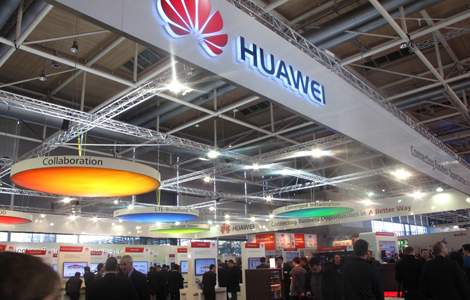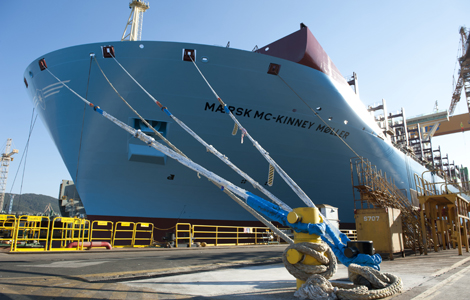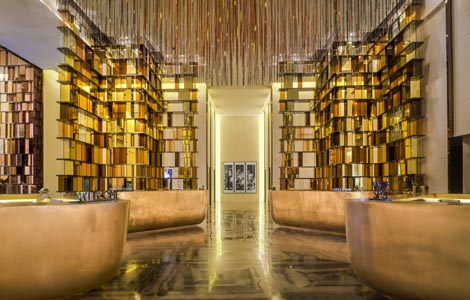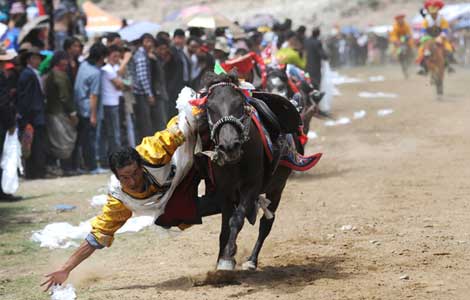
|
 Liu Qing treats his patients with Chinese massage, the mechanics of martial arts, acupuncture, scraping, cupping and sports medicine. Photos Provided to China Daily |
TCM heals with a regime that includes body and mind, as Mike Peters intimately discovers in Beijing.
The elevator glides noiselessly to the top floor of a 10-story residential building in Beijing's Sanyuanqiao area, and I step toward apartment number 1009 with the same anticipation I came with last week. I am hoping Master Liu Qing will beat me with a stick. Two sticks, in fact.
Liu, 41, is no reincarnation of the 18th-century Marquis de Sade. The martial artist from Cangzhou, Hebei province is a master of regional styles such as kaimen baji quan, which means "open-gate eight-extremities fist". A leading teacher of this style once famously said, "I do not know what it's like to hit a man twice."
Liu, however, is not waiting behind his door for any sort of combat. His training - which starts in childhood for boys in his hometown - also included health-oriented offshoots of his martial arts. Today, his holistic practice includes Chinese massage (qigong), mechanics of martial arts, acupuncture, scraping, cupping and sports medicine.
In the treatment I'm anticipating, his sticks are a pair of cloth tubes about the size of small umbrellas, and they are packed with sand, beans and herbs and stitched up to form rods or "sticks".
In Liu's hands, the effect is more reminiscent of Charlie Watts, the Rolling Stones drummer, than David Carradine. The technique is energetic and stings like the devil, yet it's oddly soothing.
The sticks also have a cool story behind them.
A fifth-generation court medicine practitioner, Chen Zuoxuan, recently told a national medical conference that the rods were first documented in 1901 during the Qing Dynasty (1644-1911).
Head eunuch Li Lianying developed the energetic meridian-beating approach, and is said to have pleased the Empress Dowager Cixi by reviving many of the concubines and imperial maids in the palace from severe depression or other ailments, curing them in just 20 days.
|
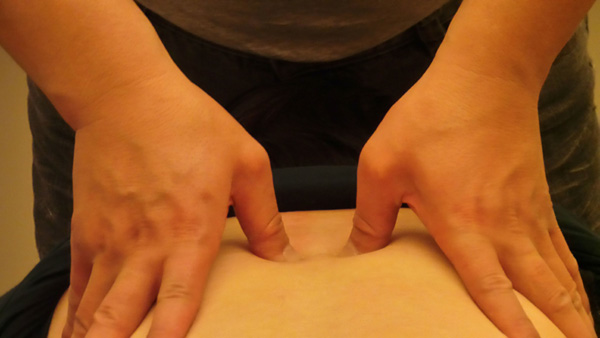 |
The delighted empress declared, "You should also make some improvement on the rods. Instead of stuffing them with sand, you should think about using some herbs. Let's call them Auspicious Rods."
At the 21st-century massage studio of Liu Qing (liushiyixintang.com), they are called "Astrotech rods". But while Liu has made a point of studying Western and contemporary medicine (at a medical institute in Fangshan district of suburban Beijing), his art is firmly rooted in Chinese tradition. The pair of rods he uses are a modified version of traditional implements for martial artists, who use longer, thicker rods to hit their own bodies to promote blood circulation and flow of qi through meridians.
Upon arrival, visitors are waved to a seat at a low tea table, a wide, glass-topped bronze bowl surrounded by four legless chairs. A solitary goldfish roams the aquatic landscape below the dark brown clay tea service, and Liu prepares a light green brew with movements as graceful as the swimming fish.
The burbling air pump blends into a gentle fugue with a recorded Tibetan chant as Liu gently pours the tea's first steeping on the heads of three Buddha clay figures perched on the tea tray. He reaches for more hot water, and pours the next brew into delicate cups, first for his client, then for himself.
There is a little business to do as we sip the fragrant beverage. Liu wants to know how I feel (good), how my sleep has been since my last treatment (fair), and whether I've been doing the neck and shoulder exercises he suggested last time (maybe).
His English is at the same level as my Chinese - I can say "ni hao" and order a cold beer with the best of them.
But there is no serious communication barrier. At initial sessions with foreign clients, his wife Veronica will sit in and translate. Later, Liu will grab his Samsung smartphone and its Youdao translation app as needed, but mostly his eyes and hands tell him what he needs to know.
He can detect hemorrhoid trouble as he gently pokes along a spinal cord. Today he asks about my diabetes.
"I'm not diabetic," I say with assurance. Liu twitches one eyebrow - a wordless response I have come to know pretty well. I will get tested for diabetes next week.
On Liu's treatment table, the program for me varies each time. "The sticks" don't come first - we'll usually begin with some qigong massage, designed to increase blood flow and release the body's natural energy.
Free flow of qi improves organ function and metabolic balance, according to traditional Chinese medicine.
"It also invigorates your hearing, sight, smell and taste responses," Veronica says, and it's effective for common chronic and some acute diseases such as bronchitis, asthma, chronic gastritis, diabetes and soft-tissue injuries among many others.
Liu has also developed a special program of prenatal massage, as studies have shown this therapy can reduce anxiety and symptoms of depression during pregnancy, relieve muscle and joint aches and even boost newborn health.
Acupressure is a therapy applied by fingertips, in seven different actions: chop, poke, beat, capture ("snatching" with five fingers), grab, hit (Liu's knee or elbow may be used for this) and seal. There are 365 acupoints lying along 14 meridians, and stimulation improves blood flow and can eliminate sickness and disease.
Tendon grasping, an acupressure treatment that evolved directly from the baji quan martial art, is a shock to the system for Westerners the first time. The pressure can be intense but produces almost immediate relief: the stiffness in my shoulders and neck dissipates quickly.
"Is it OK?" Liu will ask me several times.
Frankly, it hurts, but he already knows that. But I knew at the outset that some seriously hard work would be needed on my S-shaped spine, a problem I've had for decades. It's the old conundrum: No pain, no gain.
Another question that comes during acupressure, however, is one I dread even more.
"Do you feel warm energy," he asks, "in your lower back?"
The pause is calculated, and sometimes I feel like an inept contestant on a quiz show. Bearing down on a pressure point cuts off the blood circulation temporarily, and easing up restores the flow. My skeptical Western mind wonders if that is the "warm energy", or just pent-up blood making a run for it?
Masters like Liu say they can channel the energy inside us, and also transmit their energy to us, like a telepathic booster shot.
I want to feel the warm energy in my lower back, and sometimes I'm sure I do.
Sometimes I don't pinpoint it until he tells me where I should feel it. And sometimes - especially when he's directing the flow to my chest or face - I just don't feel anything.
This is not magic, Liu and Veronica insist, though at one session they showed me a video in which the therapist used his energy to levitate a patient off the table.
And often I feel something. Especially near the end of a session, when he tells me to lie flat on my back and relax. Liu will strike a small gong - four times, about a minute apart, and each time I feel the sound ripple through my entire being.
It's a frisson of pure wonder, perhaps the "integration of body and soul" that is also one of Liu's avowed specialties. But it's a good feeling, and it will bring me back for another session very soon.



